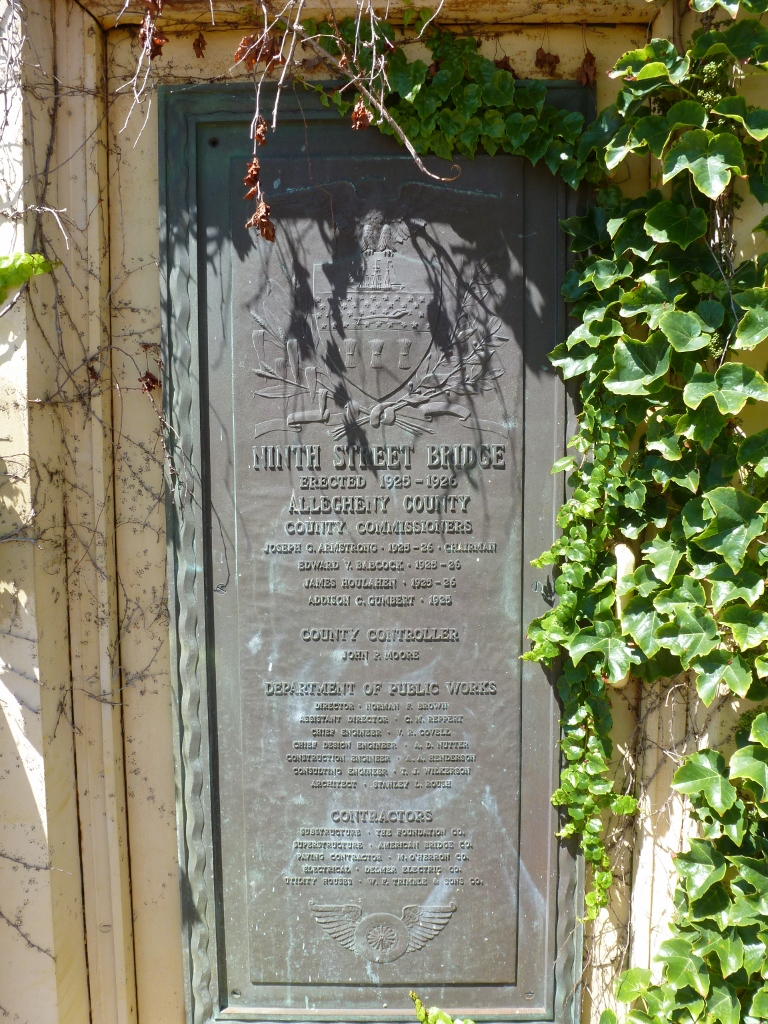There is a proposal to rename at least one of Pittsburgh’s bridges. Apparently, Allegheny County has been considering renaming its bridges for at least the last year. According to a July 25th article in the Post-Gazette, the county council’s public works committee passed a motion to rename the 16th Street Bridge after the historian David McCullough, who is from Pittsburgh. I must not have read the paper that day as I’m sure the headline would have grabbed my attention: “Allegheny County May Rename the 16th Street Bridge for McCullough.”
The first that I became aware of this proposal was Wednesday this week (Aug. 22nd) when another article announced that the whole county council voted on the proposal and passed it. This article does not commit to which bridge will be renamed. Though it later says that the 16th Street bridge is the most likely, it starts by saying “a major span” may be named after McCullough. This really got me interested. As I’ve discovered from walking and writing about Pittsburgh’s bridges, many of the bridges already have alternative names that honor someone. I believe that most people in Pittsburgh are aware that the Three Sisters Bridges have alternative names, but I don’t think people are as aware that the 40th Street Bridge also has an alternative name. So, I wondered, which “major spans” in Pittsburgh are left to be renamed?
I believe that “major spans” probably translates to bridges over the three rivers. Here follows a list of the bridges spanning the rivers and any alternative names they have.
On the Allegheny River:
Fort Duquesne Bridge – The Bridge to Nowhere (see post)
6th Street Bridge – Roberto Clemente Bridge (see post)
7th Street Bridge – Andy Warhol Bridge (see post)
9th Street Bridge – Rachel Carson Bridge (see post)
Fort Wayne Railroad Bridge
Veteran’s Bridge (see post)
16th Street Bridge – David McCullough Bridge (see post)
31st Street Bridge – William Raymond Prom Memorial Bridge (see post)
33rd Street Railroad Bridge – B&O Railroad Bridge
40th Street Bridge – Washington’s Crossing Bridge (see post)
62nd Street Bridge – R. D. Fleming Bridge (see post)
Highland Park Bridge (see post)
Brilliant Branch Railroad Bridge
On the Monongahela River:
Fort Pitt Bridge-Parkway West (see post)
Smithfield Street Bridge (see post)
Monongahela Bridge – Panhandle Bridge (railroad)
Liberty Bridge-South Hills Bridge
South 10th Street Bridge – Philip Murray Bridge (see post)
Birmingham Bridge (see post and post)
Monongahela Connecting Railroad Bridge (see post)
Hot Metal Bridge (see post)
Glenwood Bridge (see post)
Bridge Number 73 – Glenwood Bridge: B&O Railroad
Homestead Grays Bridge – Homestead High Level Bridge (see post)
On the Ohio River:
West End Bridge – West End/North Side Bridge
Ohio Connecting Railroad Bridge
McKees Rocks Bridge
The 16th, 31st, and 10th Street Bridges are the most likely candidates for being renamed. Other bridges like the Highland Park Bridge and the West End Bridge could be renamed to honor someone or something. Some bridges with only one name such as the Hot Metal and Veteran’s bridges already honor or refer to something historical and it would be a shame to replace with a new name. (Of course not all of these bridges are within the county’s jurisdiction.)
While I am talking about bridge names, I realize I should have had a discussion about the name of the Birmingham Bridge when I posted about that bridge as its name is somewhat significant. Pittsburgh’s South Side, before it was annexed to the city, was the village of Birmingham. So this is another bridge that should not be renamed as this tidbit of history could then be easier to lose.
The Aug. 22nd article in the paper said that there is an unofficial suggestion that a bridge should be renamed for Art Rooney, Sr., the founding owner of the Steelers. If McCullough gets the 16th Street Bridge, perhaps the West End Bridge or 31st Street Bridge should be the one to be renamed for Rooney as he lived on the North Side and they are the only significant bridges left that connect to that part of Pittsburgh.
Another article of interest relating to the discussion of renaming bridges was published yesterday. It discusses the dilemma of whether or not a living person should be honored in such a way.














